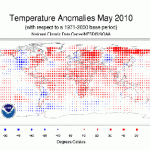
On 11 December 2010, in Cancún, Mexico, the Cancún Agreements on Climate Change were adopted by 193 nations during the sixteenth session of the Conference of the Parties (COP 16) and the sixth session of the Conference of the Parties serving as meeting of the Meeting of the Parties (CMP 6) to the Kyoto Protocol.
With these new developments, many consider Cancún as an important milestone in the history of climate change talks under the United Nations Framework Convention on Climate Change (UNFCCC). The authors took on the opportunity to revisit the lessons of Cancun to best understand and find ways for moving forward and achieving progress in future negotiations. This article reflects on the circumstances that led to Cancún, assesses the substance of the Cancún Agreements, and delivers insights over the future of global cooperation on climate change under the new direction charted by Cancún.
As a continuation of the two-track negotiation process launched in Bali in 2007, Cancun carried the torch for delivering the mandate of the Bali Action Plan, that is, to produce a fair, ambitious, long-term, legally-binding deal, which Copenhagen failed to achieve in 2009. Set against this enormous task is the back-drop of modest expectations for the outcome it can deliver, a shroud of distrust and severely weakened confidence in the multilateral process due to the manner with which Copenhagen produced the controversial Copenhagen Accord, and the mounting pressure to reach the level of ambition needed to reduce emission to meet the 2°C global warming threshold recommended by the Intergovernmental Panel on Climate Change (IPCC) in its ‘Fourth Assessment Report’. Experts’ analyses indicate that pledges submitted by Annex 1 countries under the Accord fall extremely short of the emissions cut recommended by the IPCC.
Notwithstanding the Cancún Agreements delivered decisions on many crucial elements in the negotiations. On shared vision, Parties agreed to a goal of limiting global temperature increase to 2°C, backed up by a review process to consider the possibility of increasing it further to 1.5?
On mitigation commitments by developed countries, the Agreements take note of the quantified economy-wide emission reduction targets pledged by Annex 1 parties in Copenhagen and further urge them to raise ambition of these targets to achieve level of emissions consistent with IPCC recommendations. As these targets are subject to MRV (measurement, reporting and verification), the agreements will enhance mechanisms for reporting progress, implementation of mitigation targets, and provision of financial resources to developing countries.
As for mitigation by developing countries, their contribution to mitigation would take the form of nationally appropriate mitigation actions (NAMAs) aimed at “achieving deviation in emissions relative to business-as-usual by 2020”. (ENB, 2010) The development and implementation of these NAMAs will be supported by developed country parties. Only internationally-supported mitigation actions will be subject to domestic and international MRV, while domestically-supported NAMAs will be subject to domestic MRV only. The shared vision and mitigation texts in their current form are weak. The challenge now lies in implementing the MRV to ensure that developed countries take a leadership role in mitigation and that developing countries are clearly guided on what constitutes “business-as-usual” emissions by 2020.
On REDD-Plus, as a sub-mitigation issue, the Cancún Agreements establish the REDD-Plus mechanism and specify the overall goal and scope of REDD-Plus activities to be incentivized by the mechanism. Equally notable is the support for social safe-guards to protect indigenous peoples’ rights, encourage full and effective participation of stakeholders, and non-conversion of natural forests. After this progress in REDD-Plus, the next stage is to facilitate the flow of resources needed to support REDD-Plus initiatives of developing countries.
To aid adaptation, particularly of developing countries vulnerable to the effects of climate change, Parties has established the Cancún Adaptation Framework, which prescribes the range of adaptation activities countries may pursue. An Adaptation Committee and a work programme for loss and damage will be developed to further enhance actions on adaptation. The weak agreement on loss and damage calls for a convergence among developed and developing countries becoming increasingly vulnerable to climate-related disasters to strengthen the elements of the work programme that should serve their common survival interests.
Agreements on finance include the provision of support for adaptation and mitigation actions through the fast-start finance of USD 30 billion annually by 2012 and long-term finance of USD 100 billion by 2020. Hailed as landmark agreement, is the establishment of the Green Climate Fund, which will serve as the operating entity of the financial mechanism of the UNFCCC.
On technology and capacity building, the Parties also created a Technology Mechanism composed of the Technology Executive Committee (TEC) and the Climate Technology Centre and Network (CTCN) to address needs for technology development and transfer and decided to provide financial resources to support capacity building activities of developing countries. COP 17 to be held in Durban, South Africa, will be crucial in capping unresolved and pending issues to strengthen the agreements under the finance, technology and capacity building text and pave the way for successful implementation of key provisions.
Overall, the authors feel that the Cancun Agreements is a good step forward, yet they foresee an arduous negotiations process in 2011 for two reasons. First concerns the AWG-KP (Ad Hoc Working Group on Further Commitments for Annex I Parties under the Kyoto Protocol) side of the Cancún Agreements. The KP progressed at a snail’s pace and its future remains bleak and uncertain, which may signal a possible gap between the first and second commitment periods and may precariously create a legal vacuum towards holding Annex 1 Parties accountable to their mitigation obligations.
The “pledge and review” system of mitigation targets and actions under the AWG-LCA (Ad Hoc Working Group on Long-term Cooperative Action under the Convention (AWG-LCA)) adds very little help in strengthening the mitigation agreement as it, marginalizes – advertently or inadvertently – the legal stature of the Kyoto Protocol and exerts further pressure on Parties to agree on the legal form of the mitigation negotiations and the broader Convention discussions which currently are not binding. The authors offer an option for addressing this. While the option may be deemed weaker for exacting stronger mitigation targets from Annex 1 countries, from a political stand-point, it could remove objections among Annex I parties who are not parties to the Kyoto Protocol and have lesser commitments than those who join the Protocol.














